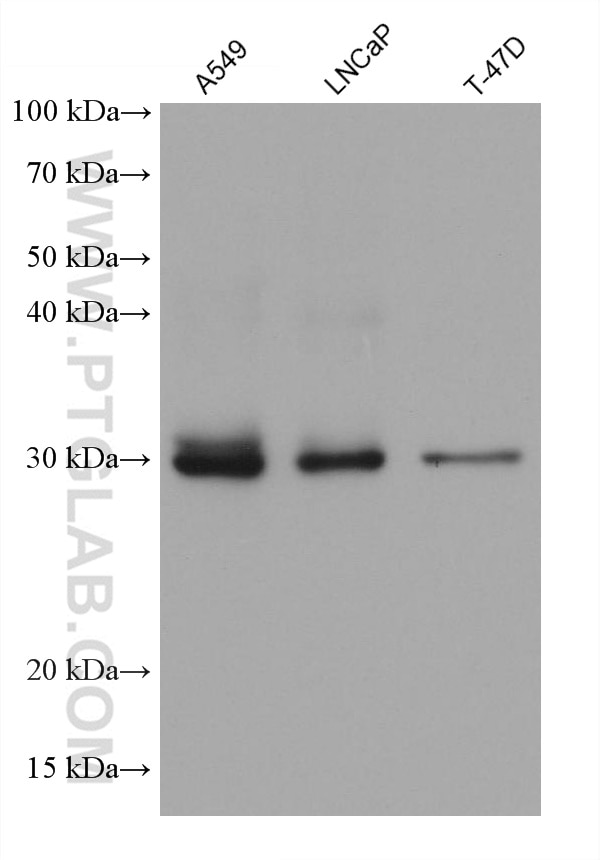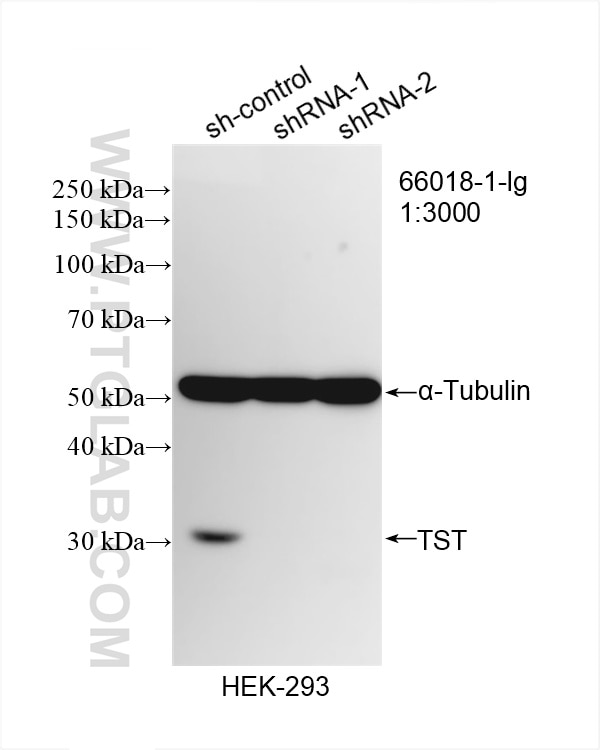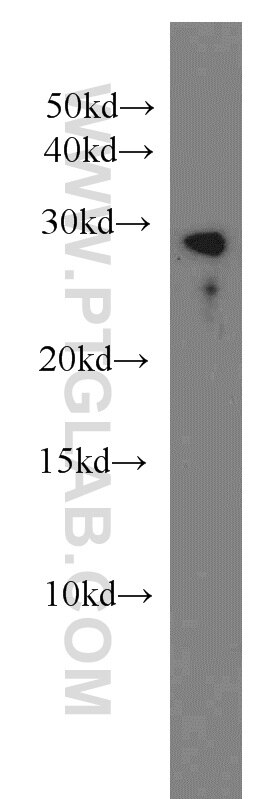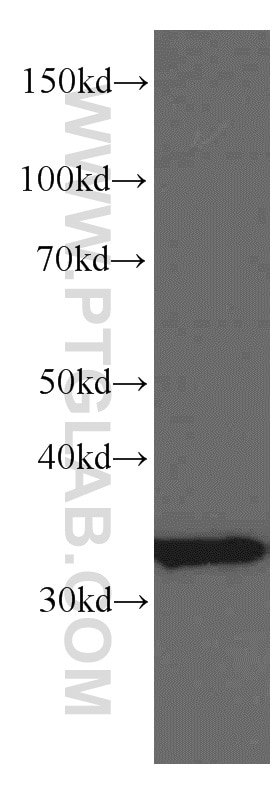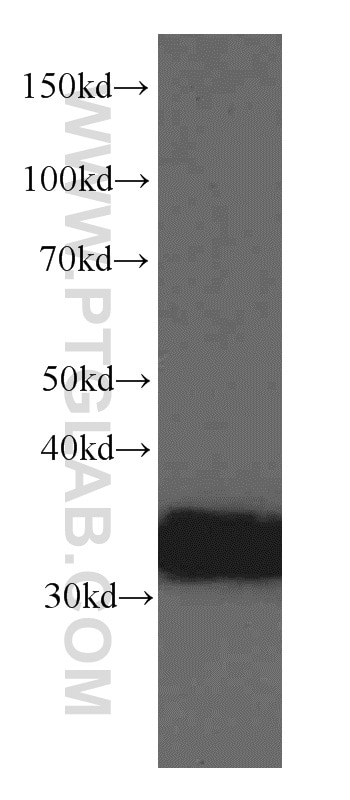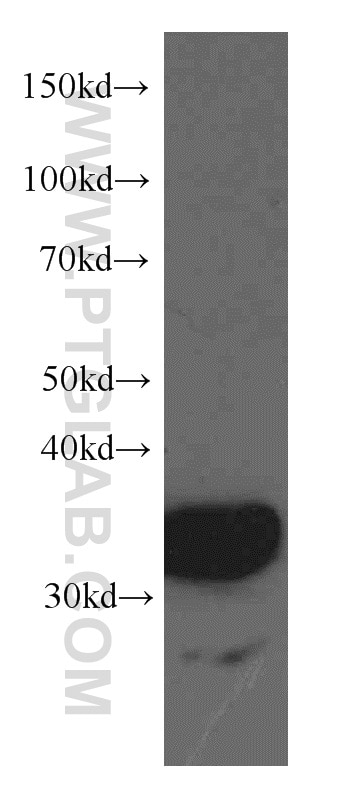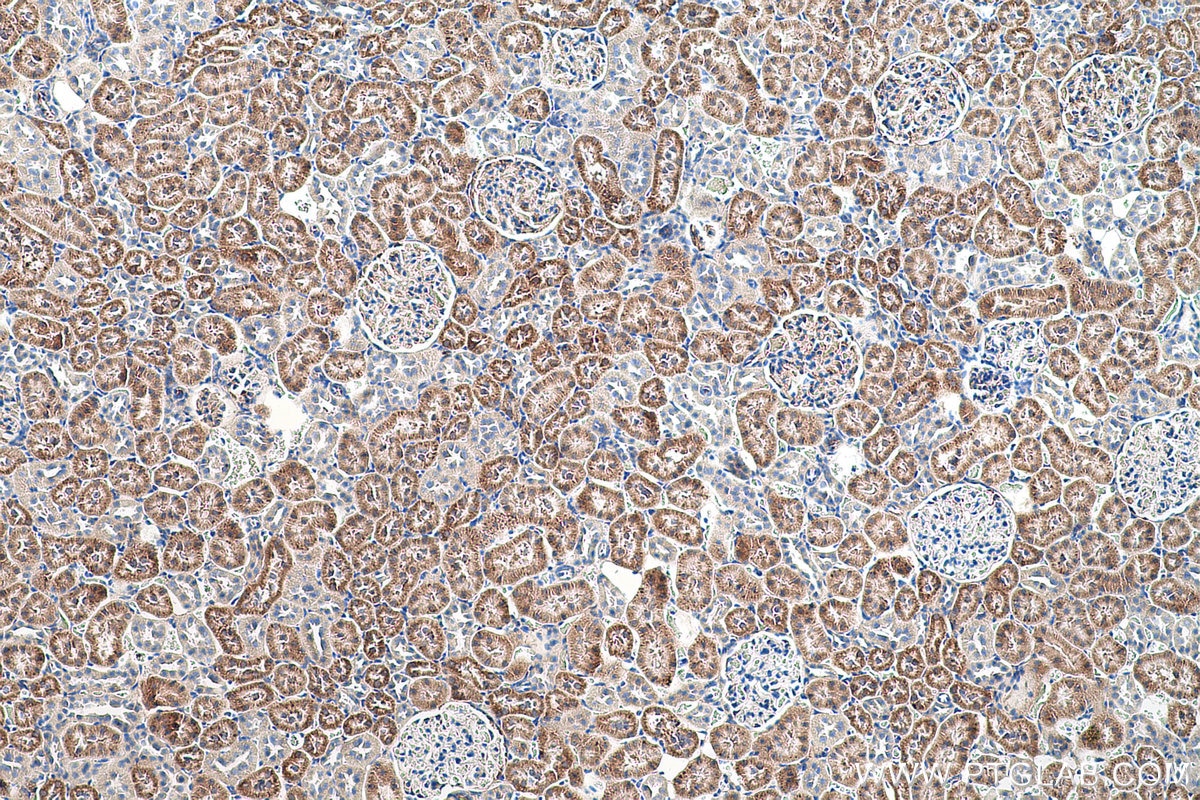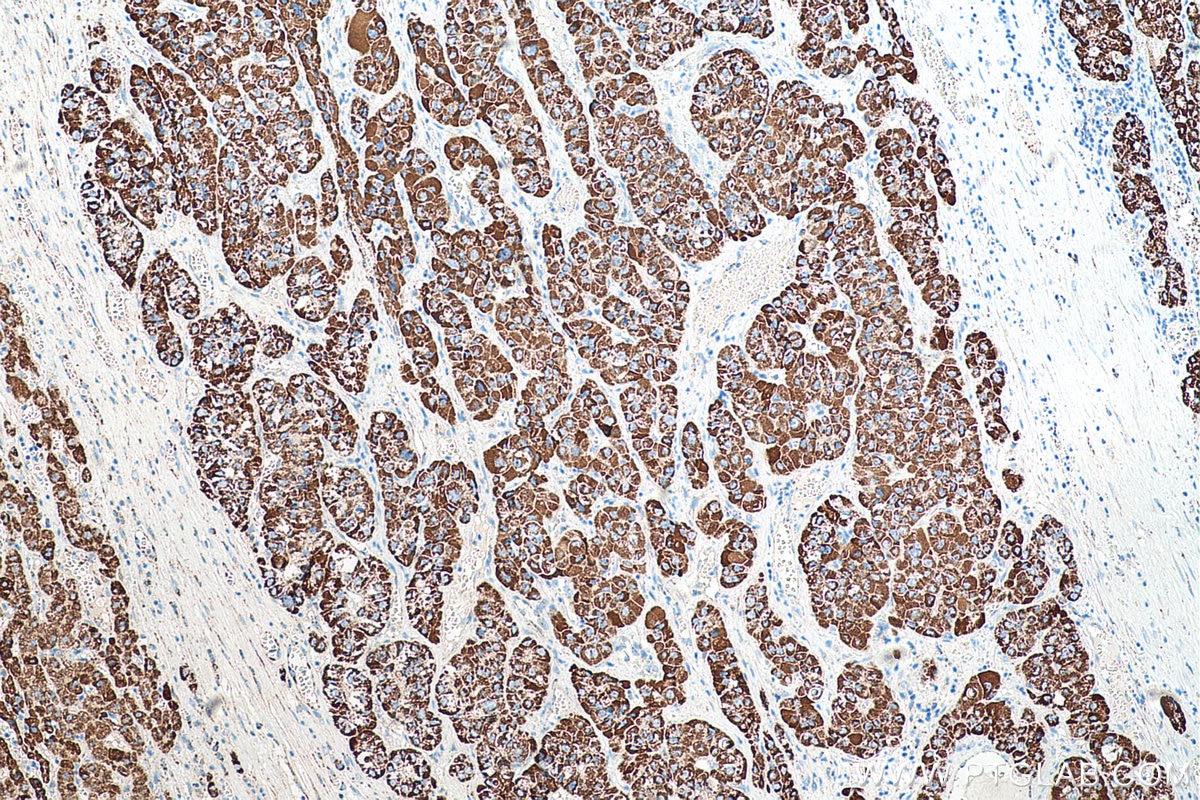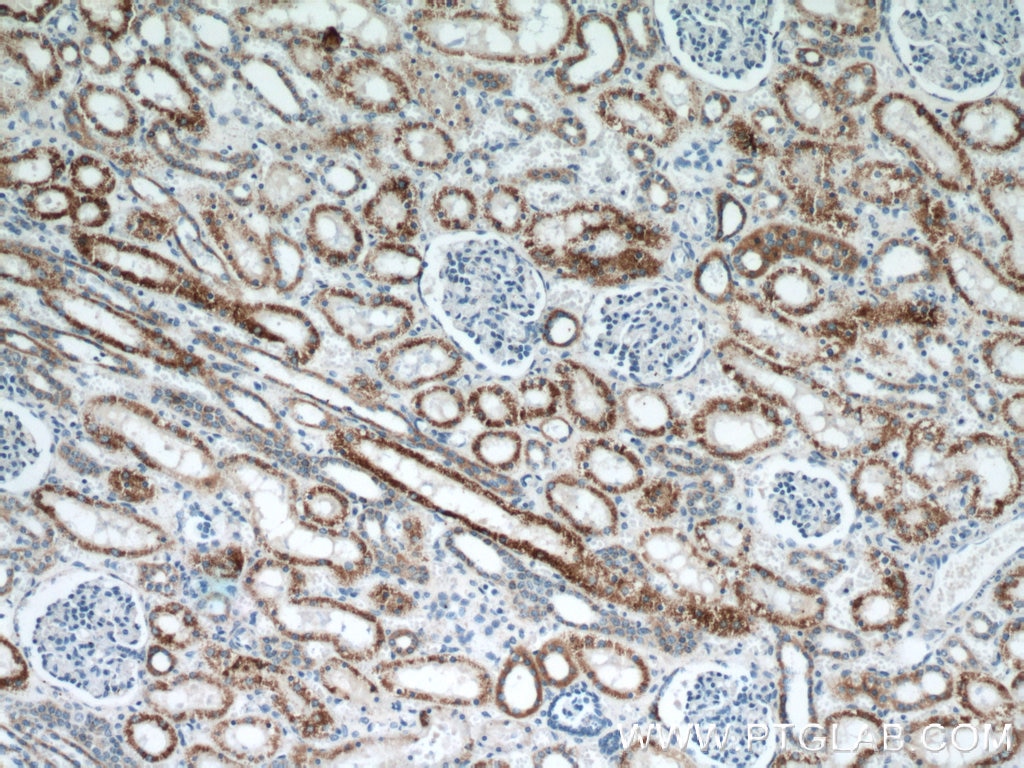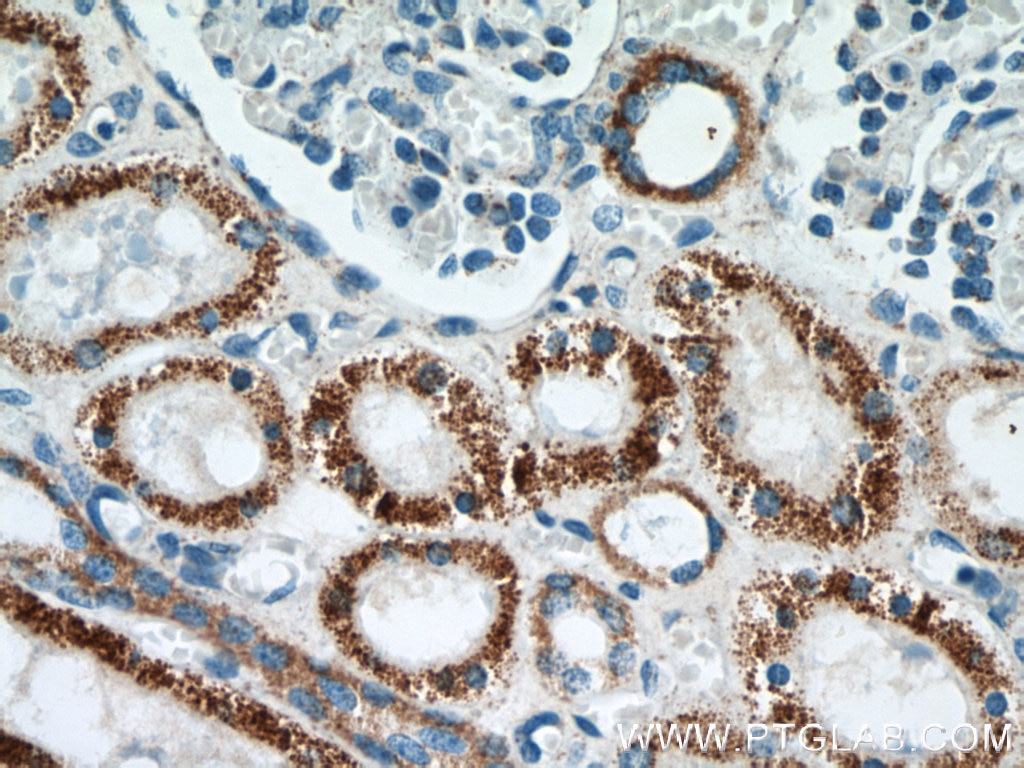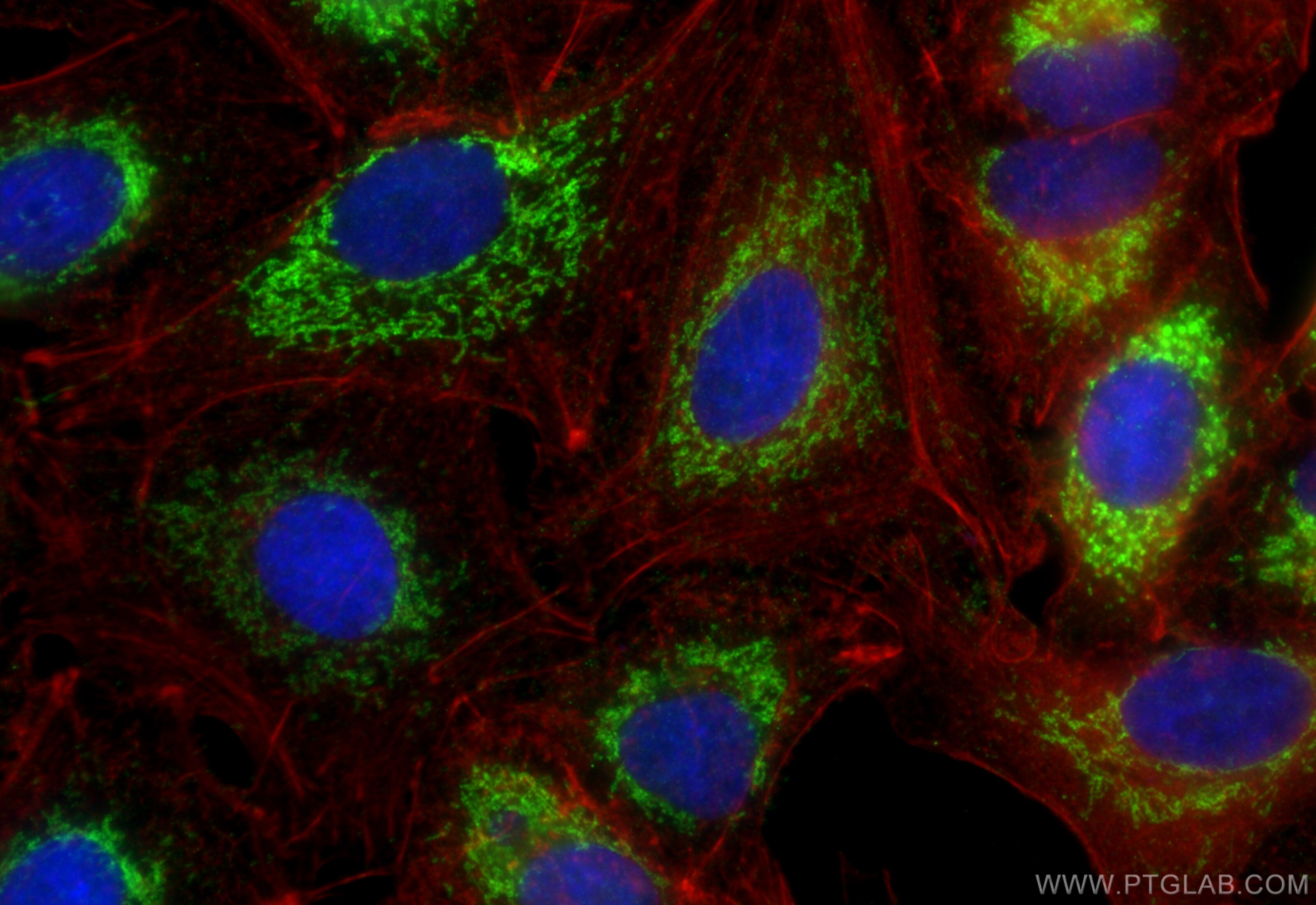Validation Data Gallery
Tested Applications
| Positive WB detected in | A549 cells, HEK-293 cells, human brain tissue, mouse brain tissue, mouse liver tissue, rat liver tissue |
| Positive IHC detected in | rat kidney tissue, human kidney tissue, human liver cancer tissue Note: suggested antigen retrieval with TE buffer pH 9.0; (*) Alternatively, antigen retrieval may be performed with citrate buffer pH 6.0 |
| Positive IF/ICC detected in | A549 cells |
Recommended dilution
| Application | Dilution |
|---|---|
| Western Blot (WB) | WB : 1:5000-1:50000 |
| Immunohistochemistry (IHC) | IHC : 1:8000-1:32000 |
| Immunofluorescence (IF)/ICC | IF/ICC : 1:200-1:800 |
| It is recommended that this reagent should be titrated in each testing system to obtain optimal results. | |
| Sample-dependent, Check data in validation data gallery. | |
Published Applications
| WB | See 7 publications below |
| IHC | See 1 publications below |
Product Information
66018-1-Ig targets TST in WB, IHC, IF/ICC, ELISA applications and shows reactivity with human, mouse, rat samples.
| Tested Reactivity | human, mouse, rat |
| Cited Reactivity | human, mouse, rat |
| Host / Isotype | Mouse / IgG2a |
| Class | Monoclonal |
| Type | Antibody |
| Immunogen |
CatNo: Ag9235 Product name: Recombinant human TST protein Source: e coli.-derived, PET28a Tag: 6*His Domain: 1-297 aa of BC010148 Sequence: MVHQVLYRALVSTKWLAESIRTGKLGPGLRVLDASWYSPGTREARKEYLERHVPGASFFDIEECRDTASPYEMMLPSEAGFAEYVGRLGISNHTHVVVYDGEHLGSFYAPRVWWMFRVFGHRTVSVLNGGFRNWLKEGHPVTSEPSRPEPAVFKATLDRSLLKTYEQVLENLESKRFQLVDSRSQGRFLGTEPEPDAVGLDSGHIRGAVNMPFMDFLTEDGFEKGPEELRALFQTKKVDLSQPLIATCRKGVTACHVALAAYLCGKPDVAVYDGSWSEWFRRAPPESRVSQGKSEKA 相同性解析による交差性が予測される生物種 |
| Full Name | thiosulfate sulfurtransferase (rhodanese) |
| Calculated molecular weight | 297 aa, 33 kDa |
| Observed molecular weight | 33 kDa |
| GenBank accession number | BC010148 |
| Gene Symbol | TST |
| Gene ID (NCBI) | 7263 |
| RRID | AB_11045660 |
| Conjugate | Unconjugated |
| Form | |
| Form | Liquid |
| Purification Method | Protein A purification |
| UNIPROT ID | Q16762 |
| Storage Buffer | PBS with 0.02% sodium azide and 50% glycerol{{ptg:BufferTemp}}7.3 |
| Storage Conditions | Store at -20°C. Stable for one year after shipment. Aliquoting is unnecessary for -20oC storage. |
Background Information
Thiosulfate sulfurtransferase (TST), also known as rhodanese, is a mitochondrial enzyme involved in cyanide detoxification and the formation of iron-sulfur proteins and the modification of sulfur-containing enzymes.
Protocols
| Product Specific Protocols | |
|---|---|
| IF protocol for TST antibody 66018-1-Ig | Download protocol |
| IHC protocol for TST antibody 66018-1-Ig | Download protocol |
| WB protocol for TST antibody 66018-1-Ig | Download protocol |
| Standard Protocols | |
|---|---|
| Click here to view our Standard Protocols |
Publications
| Species | Application | Title |
|---|---|---|
J Biol Chem Polymorphic variants of human rhodanese exhibit differences in thermal stability and sulfurtransfer kinetics. | ||
Biochem Pharmacol Drug resistance induces the upregulation of H2S-producing enzymes in HCT116 colon cancer cells. | ||
J Biol Chem Hydrogen sulfide perturbs mitochondrial bioenergetics and triggers metabolic reprogramming in colon cells. | ||
Biomolecules Sulfurtransferases and Cystathionine Beta-Synthase Expression in Different Human Leukemia Cell Lines. | ||
Mol Biol Rep Curcumin reduces myocardial ischemia-reperfusion injury, by increasing endogenous H2S levels and further modulating m6A | ||
Burns Cystathionine-gamma-lyase deficient mice are protected against the development of multiorgan failure and exhibit reduced inflammatory response during burn. |

